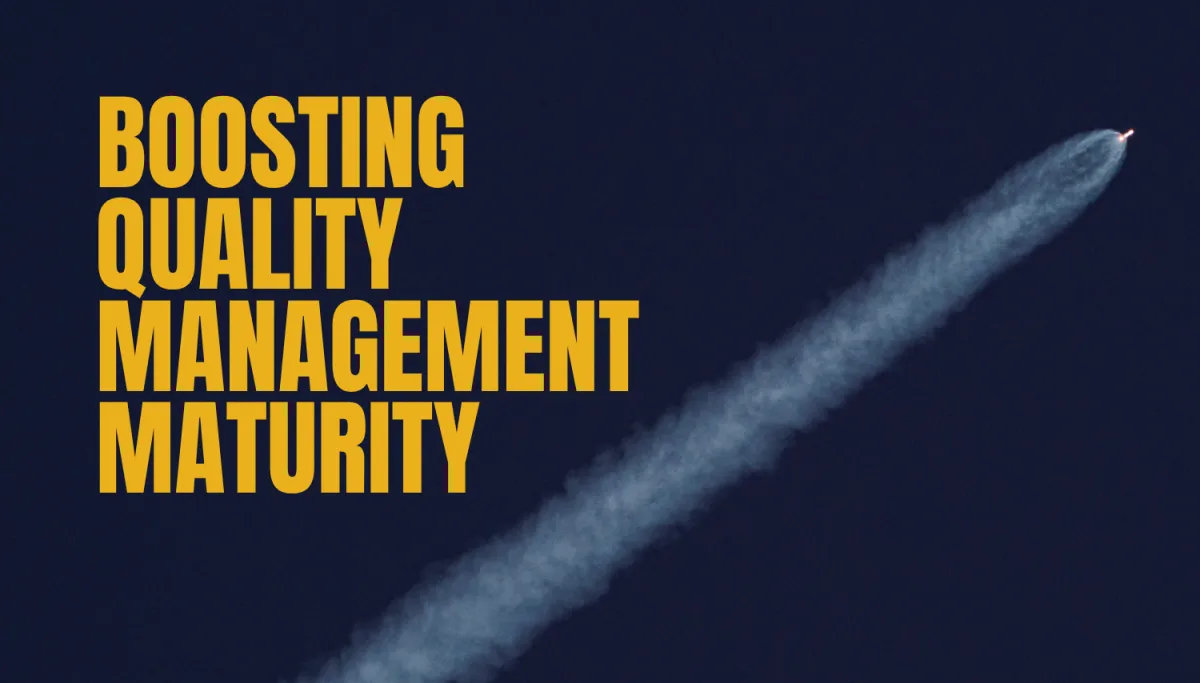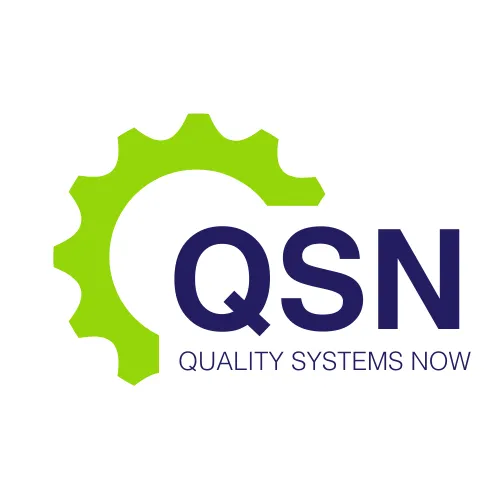LATEST NEWS

Boosting Quality Management Maturity
Quality Management Systems (QMS) form the foundation for achieving and maintaining compliance with regulatory expectations such as Good Manufacturing Practice (GMP). However, the existence of a QMS alone does not guarantee product quality or regulatory readiness. What distinguishes high-performing organisations from others is the maturity level of their quality management systems. Quality Management Maturity (QMM) refers to the extent to which quality is embedded into an organisation’s culture, systems, and decision-making processes. It is a critical factor in determining not only regulatory compliance but also operational resilience, product consistency, and long-term business success.
Regulatory authorities, including the U.S. Food and Drug Administration (FDA), the European Medicines Agency (EMA), and Australia’s Therapeutic Goods Administration (TGA), are increasingly focusing on QMM to evaluate the robustness of pharmaceutical quality systems. In this context, boosting quality management maturity is not merely an operational improvement strategy but a regulatory and competitive imperative. This article explores the definition, assessment, and enhancement of QMM, with a particular focus on its relevance to therapeutic goods manufacturers, testing laboratories, and biotechnology firms.
Defining Quality Management Maturity
Quality Management Maturity is a multi-dimensional measure of how deeply and effectively quality principles are integrated into the strategic and operational fabric of an organisation. Unlike basic compliance, which ensures that minimum regulatory requirements are met, a mature QMS proactively identifies risks, fosters continuous improvement, and supports decision-making that prioritises patient safety and product integrity.
The FDA’s Quality Management Maturity initiative defines QMM as “the state attained when drug manufacturers have consistent, reliable, and robust business processes to achieve quality objectives and promote continual improvement.” Similarly, the International Council for Harmonisation (ICH) Q10 guideline on Pharmaceutical Quality Systems promotes a lifecycle approach that supports both compliance and innovation through mature quality practices.
QMM is typically evaluated across multiple domains, including governance, leadership engagement, data management, risk management, deviation handling, change control, continuous improvement, and quality culture.
The Business and Regulatory Drivers for QMM
There are several compelling reasons to invest in QMM:
Regulatory Readiness: Regulators are beginning to reward companies with mature QMS through programs such as risk-based inspection frequencies, streamlined approvals, and fewer post-market obligations.
Operational Efficiency: Mature quality systems reduce the cost of poor quality, including deviations, recalls, and rework, through robust preventive practices.
Supply Chain Resilience: QMM enhances an organisation’s ability to manage disruptions, prevent shortages, and maintain product availability.
Market Advantage: Companies with mature QMS can enter regulated markets more easily and build stronger reputations with stakeholders, partners, and patients.
Assessing Quality Management Maturity
A foundational step in boosting QMM is conducting a maturity assessment. This can be performed internally or with the assistance of qualified consultants such as Quality Systems Now. Several assessment models exist, including the Capability Maturity Model Integration (CMMI), the ISPE Quality Maturity Model, and proprietary frameworks developed by consulting firms.
A typical QMM assessment evaluates the organisation’s performance across key dimensions:
Leadership and Governance
Leadership commitment to quality must be visible and consistent. Mature organisations ensure that quality is embedded in strategic decision-making and that senior leaders are accountable for QMS performance. Governance structures should include regular quality review meetings, escalation pathways for quality issues, and integration of quality metrics into business KPIs.
Quality Culture
A mature QMS thrives in a culture that encourages transparency, ethical conduct, and shared ownership of quality. Employees should feel empowered to report deviations and propose improvements without fear of retaliation. A quality culture survey can provide valuable insight into employee perceptions and behaviour.
Risk Management
Risk-based thinking is fundamental to QMM. Mature organisations implement structured risk assessment tools such as Failure Mode and Effects Analysis (FMEA), Hazard Analysis and Critical Control Points (HACCP), and ICH Q9 methodologies. Risks are systematically identified, evaluated, mitigated, and reviewed over time.
Data Integrity and Knowledge Management
Data integrity is essential for reliable decision-making. A mature QMS ensures that data is accurate, complete, consistent, and readily retrievable throughout its lifecycle. Additionally, mature systems promote knowledge management practices, ensuring that information from past deviations, audits, and validations is captured and leveraged for future improvements.
Deviation and CAPA Systems
Deviation handling and Corrective and Preventive Action (CAPA) systems are key indicators of QMM. In mature systems, deviations are not only corrected but analysed to identify systemic root causes. CAPAs are tracked to closure, their effectiveness is verified, and learnings are communicated across departments.
Continuous Improvement
QMM requires an organisational commitment to continuous improvement. This includes formal programs such as Kaizen, Six Sigma, or Lean, as well as informal practices that encourage innovation. Periodic quality reviews, trending analyses, and quality objectives should drive continuous learning and optimisation.
Strategies for Boosting QMM
Improving QMM is a multi-step process that requires long-term commitment. The following strategies can be implemented to accelerate maturity:
Develop a QMM Roadmap
A strategic roadmap identifies current maturity levels, sets realistic improvement goals, and defines actions needed to close gaps. The roadmap should align with business objectives and be supported by leadership.
Strengthen Quality Leadership
Investing in quality leadership training and creating cross-functional quality councils helps ensure that quality is a shared responsibility. Leaders must champion the importance of QMM in achieving operational excellence and regulatory success.
Enhance Training and Competency Management
Training programs should go beyond GMP basics to include modules on quality risk management, root cause analysis, and data integrity. A competency-based training system ensures that staff not only understand SOPs but can apply them in practice.
Invest in Digital Tools
Modernising QMS platforms through digital tools such as Electronic Quality Management Systems (eQMS), real-time dashboards, and integrated documentation systems can support faster decision-making and better oversight.
Engage Third-Party Expertise
External consultants such as Quality Systems Now can offer objective assessments, training, and support for QMM improvement. Their experience across different regulatory environments and product categories enables tailored solutions that meet specific business needs.
Case Example: Improving QMM in a Mid-Size Therapeutic Goods Manufacturer
A mid-size therapeutic goods manufacturer in Australia faced repeated deviations related to batch record completeness and process inconsistencies. A QMM assessment conducted by Quality Systems Now revealed deficiencies in risk management practices, limited employee engagement, and reactive deviation handling.
Following the assessment, a maturity roadmap was developed, focusing on leadership alignment, risk-based change management, and training reinforcement. An eQMS was introduced to streamline CAPA tracking and documentation. Over 12 months, the site reduced major deviations by 60%, improved inspection readiness scores, and achieved more timely batch release through better documentation practices.
Conclusion
Boosting Quality Management Maturity is essential for organisations operating in regulated sectors such as pharmaceuticals, biotechnology, and therapeutic goods. A mature QMS not only ensures compliance with GMP and regulatory expectations but also supports operational efficiency, risk mitigation, and product quality.
Achieving QMM is not a one-time effort but an ongoing journey that requires leadership engagement, robust systems, employee empowerment, and a culture of continuous improvement. By assessing maturity levels, implementing targeted improvements, and leveraging expert guidance, organisations can build quality into every facet of their operations.
Quality Systems Now supports companies on this journey by providing expert consultancy, training, and system design tailored to the specific regulatory and operational challenges of the life sciences industry. In an era of rising regulatory expectations and market complexity, QMM is not just a metric—it is a strategic asset.
